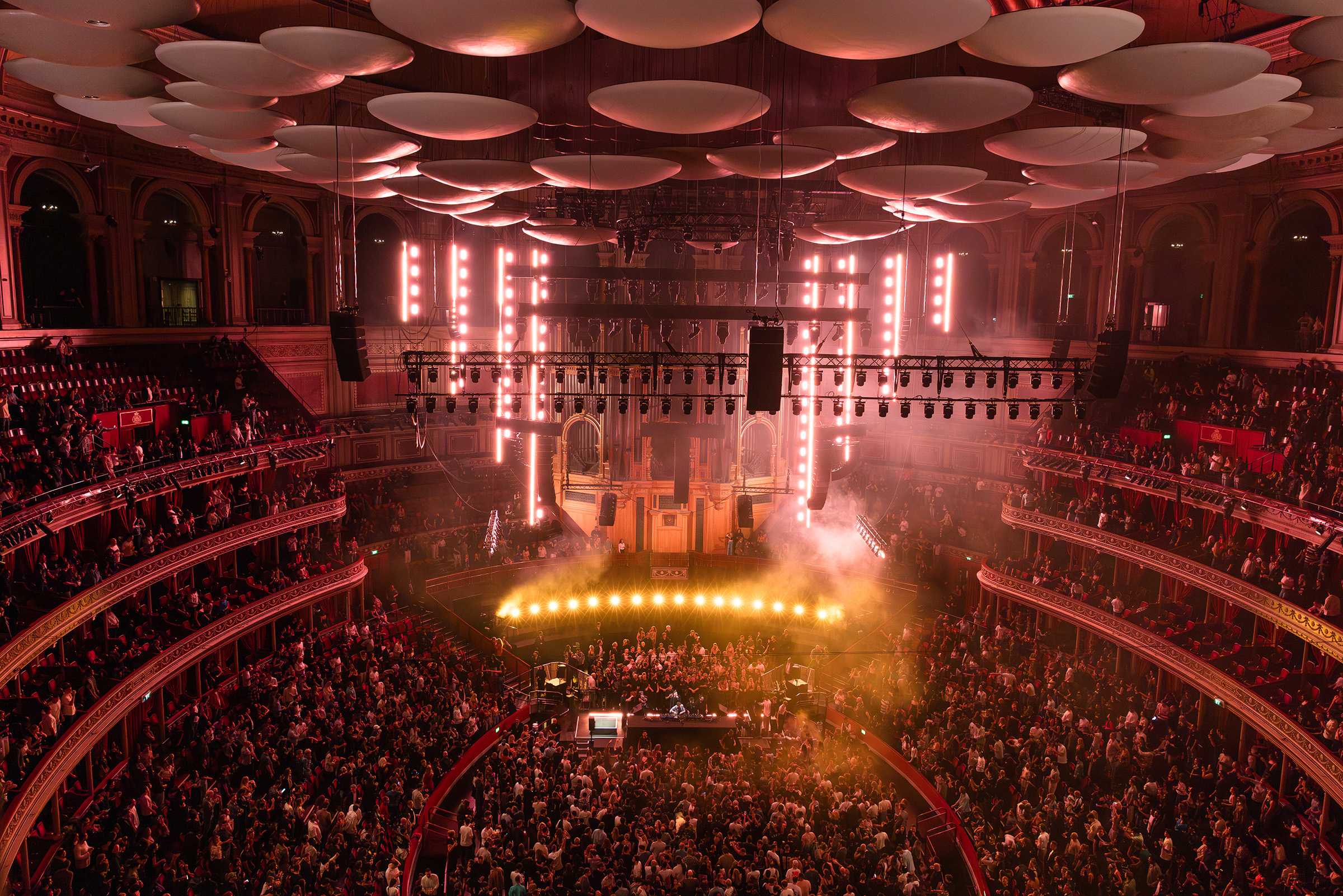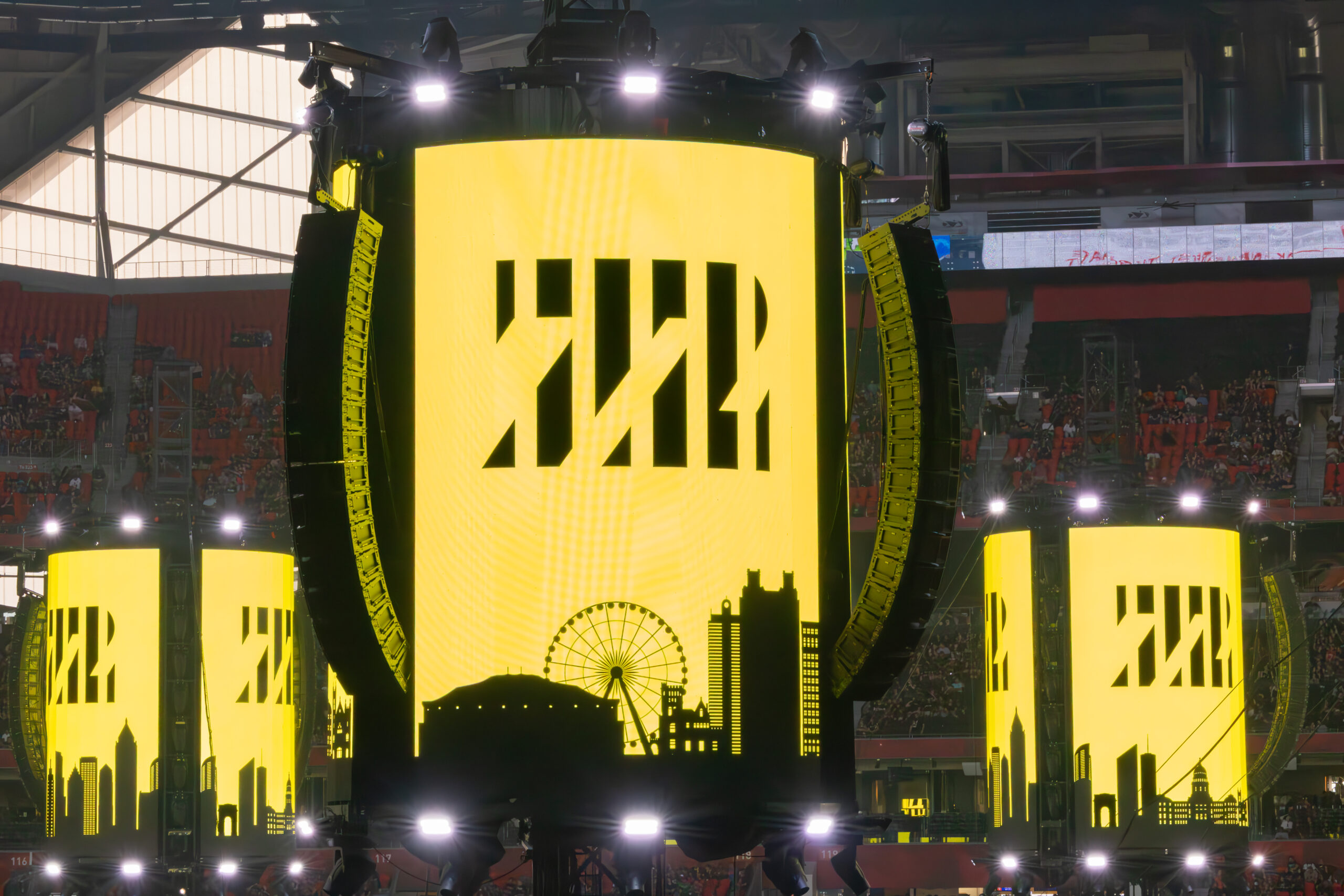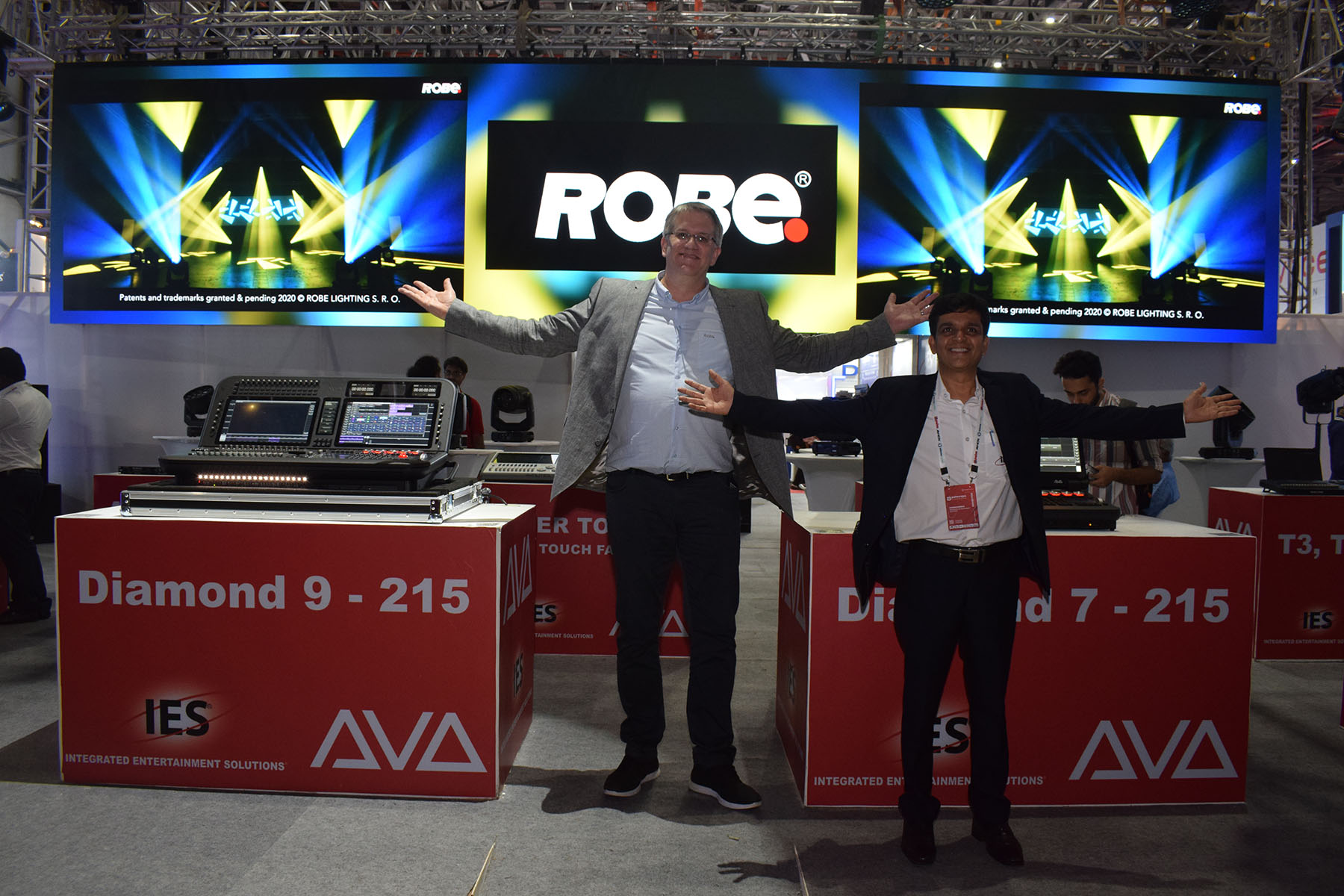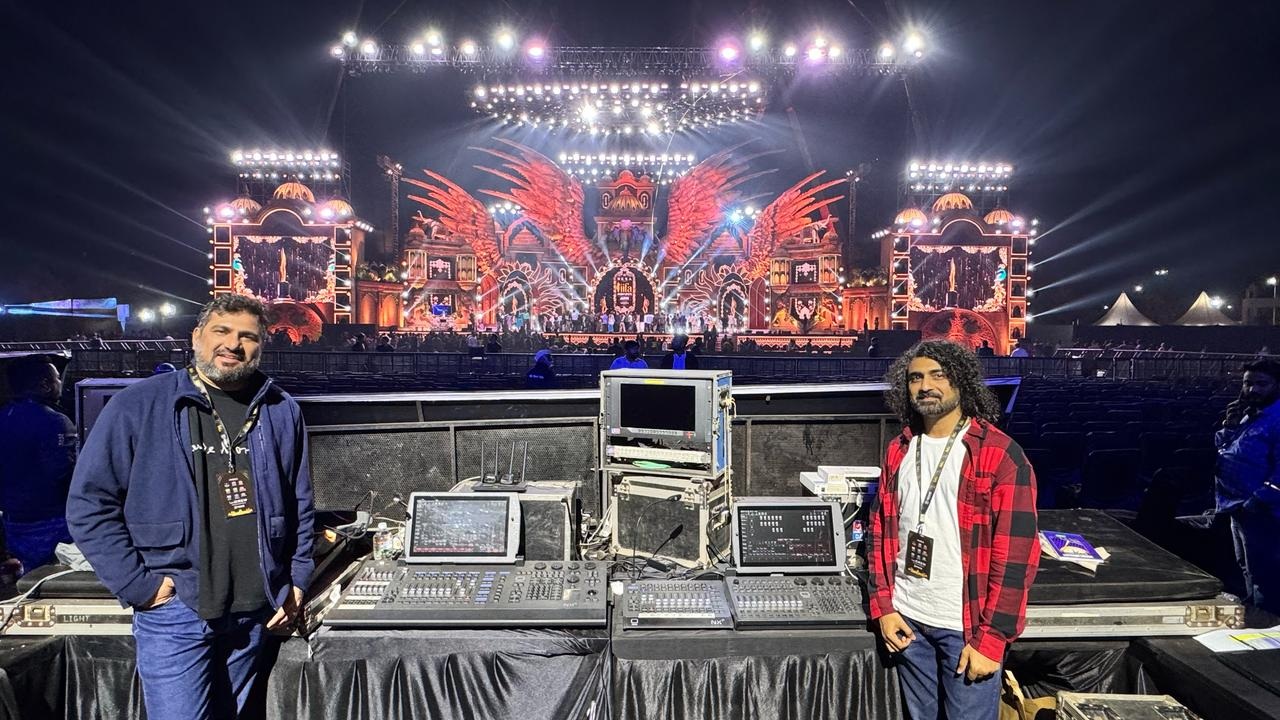CAMBRIDGE, U.K. – Large-scale projections designed by Ross Ashton helped bring the year-long celebration for Cambridge University's 800th year to a close. Called Transforming Tomorrow, the light shows were projected onto Cambridge's Senate House and adjacent Old School, and also part of Kings College Chapel and the nearby Gibbs Building. A combination of PIGI and video projection technologies supplied by E/T/C London were used in three separate but related animated shows. These expressed elements of the University's science and research program as art in large format scrolling images.
Ashton, who had designed projections for the 800th Anniversary's opening ceremony 12 months ago, was asked back to Cambridge for the closing shows. The Cambridge 800 Committee opted to expand the scale and scope of the projections and incorporate the Kings College/Gibbs site in addition to Senate House, creating a specially routed walk-through visual, seen by up to 20,000 visitors over three evenings.
"I was extremely privileged to return to Cambridge and work on this Finale show, for which my brief was to highlight some of the ongoing ground-breaking ideas, concepts and research being undertaken at Cambridge that will make a huge impact on the future of science, medicine, technology, society and thinking," Ashton said.
The projection content was produced from a combination of University supplied material from a number of academic and scientific sources and content provided by Ashton and his team, which included Paul Chatfield and Richard Porter. They then transformed the images into multi-layered video and PIGI film artwork using PhotoShop, After Effects, OnlyView and other software.
Kings College Chapel/Gibbs Building
The images projected onto the fascia of the residential Gibbs building stretched 70 meters wide, while those on the Kings College Chapel rose to 40 meters high, with both surfaces fed by five PIGI 6Kw projectors with double rotating scrollers, each loaded with approximately five meters of film. These were all positioned 110 meters away in weatherproof hides. Three PIGIs produced the Gibbs picture, and two fed the image onto the Chapel.
The two surfaces told different stories.
Nano, projected onto Kings College Chapel, took the art of stained glass as one of the earliest examples of nanotechnology and human manipulation of objects' molecular structures to produce something new. Projected images were created from photos of stained glass windows from various Cambridge colleges, including Kings, and juxtaposed with images of modern nanoscience from the Cambridge Nanoscience centre.
The Gibbs building show, Planets to Proteins, was devised to illustrate the range of scientific research taking place at Cambridge, and the similarity in structure between the macroscopic and the microscopic. The images of galaxies and nebulae were taken from a mix of space and ground-based telescopes, including the Hubble and Spitzer Space Telescopes.
These shows were both programmed by Karen Monid using a PIGI OnlyCue system. Although they were different, they ran simultaneously, and there were several parallels in look and feel, which was appropriate, given the close proximity of the buildings.
Monid programmed the shows on both surfaces so they could work and be viewed either together or as detached elements. The two sites synched momentarily just for one image, which was a specially-commissioned cartoon by illustrator (and Downing College alumnus) Quentin Blake, who also produced cartoons for the Senate House show.
In addition to "organically synching" the two sets of images, Monid programmed the shows so that their movements were harmonious with the accompanying orchestral soundtrack.
The large stained glass window of Kings College Chapel were internally floodlit with tungsten lightsources, bringing a soft, warm glow to the center of the projections, which were masked to fit around it.
Senate House
At Senate House, a 10-minute looped show, Blurring the Boundaries, was projected onto the two buildings that sit at right angles to each other by four Christie S+20K projectors. These were positioned in custom-made hides, designed by E/T/C London's Paul Highfield, sitting directly opposite across a large lawn. The images were soft-edged together in the middle.
The imagery explored the interactions between academic disciplines ranging from music, psychology, acoustics, computer science and neuroscience, computer science and linguistics, and quotations from alumni ranging from Lord Alfred Tennyson to Douglas Adams.
The show's artwork predominantly consisted of multiple layered still art images, which were then animated using E/T/C's OnlyView control platform. The images were stored on four OnlyView servers, one per projector, and programmed by Richard Porter using the system's multi-timeline function.
The process involved mapping them precisely and in minute detail to fit the intricate architecture of the buildings. Chatfield and Porter also created the custom items such as athletic skeletons.
Michael Barry joined the E/T/C London team as a technician for the project and fitted all 31 arched windows in the fascias of both buildings with tailored Corex white-outs.
"Apart from the high profile buzz of the event, it was amazing to produce shows incorporating these beautiful iconic buildings and landscapes – normally not accessible to the public – into a story that looks forward to the future potential and creative energies of Cambridge's vast research resources – science-into-art, art-into-science," Ashton said.
For more information, please visit www.etclondonparis.com.



